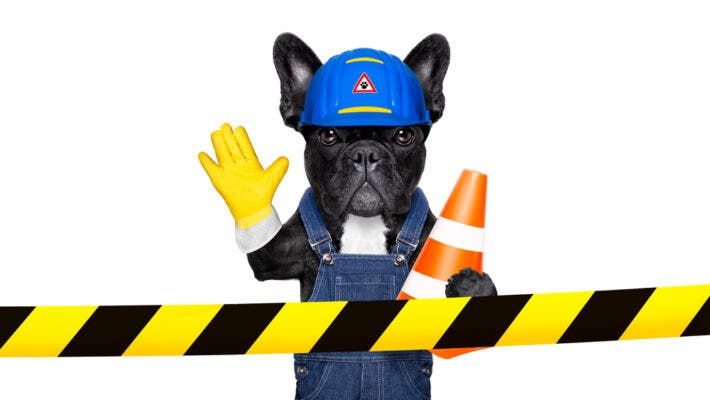Bounce House Damage is Scary, But Fixing it is Easy
At some point, your bounce house is going to suffer damage. Maybe it’ll be an accident, or maybe it’ll just be general wear and tear. But at some point, hopefully long after you’ve brought it home, it’s going to happen. And knowing how to patch a bounce house is going to be a lifesaver when that unfortunate day arrives.
Thankfully, patching a bounce house is a relatively straightforward process, and it won’t cost you an arm and a leg, either. Using vinyl repair kits and tools, you can repair your vinyl crossover inflatable or commercial bounce house fairly easily.
These repair tips will work on any of your inflatables, too. You can use these simple steps to repair a bounce house, an inflatable water slide, a splash and ride slide, an inflatable obstacle course, or inflatable games. And patching rips and tears in your party tents is very similar, too.
Important Note: To learn more about repairing torn or damaged seams, long tears, heavy shredding, or other serious bounce house damage, please read through to the very end of this article.
Step 1 - Clean the Affected Area
First things first, we’ll need to thoroughly and vigorously clean the damaged area, including the area surrounding the damage. Be careful not to cause any rips or tears to get bigger, of course. We’ll want this area to be thoroughly clean before attempting to apply adhesives, vinyl cement, or stitching. Read this to learn how to clean a bounce house.
Step 2 - Prepare Your Patch
Ready to patch your bounce house permanently, now? Great! Let’s start by cutting out a circle or oval of vinyl patch material. It doesn’t need to be perfect, but you need to avoid leaving corner edges on the patch, as these will come loose over time a lot more quickly than a rounded edge will. You’ll of course want your patch to be large enough to cover the entire affected area, with a little overlap to ensure the patch material can be securely glued to the bounce house.
Step 3 - One More Quick Cleaning
Next, we’re going to clean the affected area one more time, as well as our patch material, using a non-acetone cleaner, like rubbing alcohol. Thoroughly clean both the affected area and the patch, and give it a little bit of time to dry.
Step 4 - Apply the Vinyl Cement
Once everything is dry again, apply some HH-66 or SX-69 vinyl cement to both your vinyl patch and the material around the area you’re patching. You don’t need huge gobs of vinyl cement here. Just use a thin layer. Now just use a seam roller to press the patch firmly onto the bounce house, ensuring there aren’t any bubbles or loose bits, and then apply some pressure for a few minutes.
[product ids="3369,4681"]
When you’re done with this step, check the patch over and make sure every side of the patch is stuck down firmly. You may need to give it another round of cementing, rolling, and pressure to make sure the full patch is seamlessly connected to the bounce house.
How to Patch a Bounce House the Quick (but Temporary) Way
Should you spot damage while the bounce house is in use, you may want to give it a quick fix, then patch the bouncer properly after your party. In this case, you’ll want to use some vinyl repair tape. It’s a good idea to keep some vinyl repair tape on hand just in case of emergencies like this.
[product ids="3477,3468,3475"]
Simply apply your vinyl repair tape over the affected area, then use a seam roller to press it down firmly, eliminating air bubbles. This temporary fix should hold up for a few hours of bouncing, but it won’t last forever. You’ll definitely want to patch the bounce house correctly as soon as you can and prevent even more damage down the line.
How to Patch a Bounce House with Serious Damage
Not all bounce house repairs are going to be as easy as gluing on a simple patch. Knowing how to patch a bounce house damaged at its seams or with large shreds or gashes is more involved. But thankfully, it’s only slightly more difficult than patching, and it’s not too expensive either.
[product ids="3246,3245,3241"]
To fix serious damage and damaged seams, you’ll need to use a sewing awl kit and sew the bounce house back to health. This process is a little challenging at first, but there’s really no better way to fix damaged seams or serious damage. It’s a lot cheaper than paying for shipping and sending your bounce house off for professional repairs.

